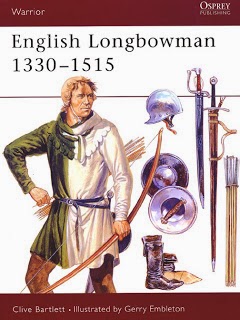So when it comes to the Kickstarters, I've tried to cut back on posting on them. I think I've been pretty successful. It's been a busy month with a lot of different posts.
But hey, it's almost February so let's look at where we're at.
Tectonic Craft Studios continues to flounder. I can appreciate the promises of "shipping in the next seven days" but since that was like a month ago, again the founder has bitten off way more than he can chew. I strongly suspect that if he is a sponsor at Adepticon in 2014, I'll be talking to him directly to get my stuff. I let it slide last year and at Gen Con but this is nonsense.
Dwimmermount: Remember my talks of nonsense? The guy tried very hard at first but life with twins has kicked his ass. I don't want to say I've 'written' it off as I suspect he's not doing it out of any sense of 'screw you!' as opposed to 'life is kicking my ass!'.
Steampunk Musha: Well, we've heard some stuff and it's been quite for a few weeks but it's still well past a year late.
Imbrian Arts Miniatures: I highlighted this one because partial delivery! Good deal. Fantastic stuff. His work can stand toe to toe with the best of the Confrontation minis when they were good.
Assimilation Alien Host: Man, I was excited when these were announced. I was like, "Yeah, Blasters and Bulkheads!" or something. That game has come out with a second edition already while I have no miniatures.
Relic Knights: Yeah, so unimpressed that these figures better knock me out right from the get go.
Cthulhu Mythos Foundry Style: Man, you see someone with vision and talent and you're like, "Hey, this looks awesome." And then basically months of nothing. Never preback another thing this guy does again but if I'm happy with the final product will buy at retail.
Drake is also highlighted but unlike Imbrian, these miniatures did nothing for me. Could just be that there are a ton of components, a lot of flash and some pieces that just don't look good or it could be that everything still isn't ready. M'eh. Maybe when the rulebook hits I'll be a bit more inspired.
Fractured Dimensions: Still waiting on those exclusive figures. The end should be near though.
Tablescapes: Rolling Fields aren't done yet and it's not really late for me but it's on the spreadsheet.
Domains At War: Remember when I mentioned that Dwimmermount guy with the twins? Who knew it could effect ALL of your projects? Like Tavis but never backing another thing he does. This will be three out of four I've backed and all of them late.
Dungeon Crawler: Relic Knights got hit by the China celebration. So did these guys. I didn't spend a ton of cash here but enough that I'm... annoyed at the delays.
Kingdom Death: M'eh? I initially overspent on this one to begin with and my board gaming hasn't been great lately but it looks great, the creator is heavily involved and things look to be moving quickly.
I suppose Cthulhu Wars are way later then I am keeping track of here and I should add it to the list.
I see that others have slowed down their backing of Kickstarters as well. It's hard to maintain enthusasim when cash is lacking and hundreds (or more) of dollars are already out waiting for product.
This doesn't count some that have essentially failed or big delays announced in other projects, including Robotech. Heck, it had Palladium's name associated with it. Who didn't know that was going to be late? Who?
As time goes on, are you backing more kickstarters or fewer? Do you keep track of it in Excel or another spreadsheet program? Still finding lots of new stuff to enjoy?
| Project Name | Due Date | Date | Late Days | Late Months |
| Tectonic Craft Studios | 6/1/2012 | 2/1/2014 | -610 | -20 |
| Dwimmermount | 8/1/2012 | 2/1/2014 | -549 | -18 |
| Steampunk Musha | 10/1/2012 | 2/1/2014 | -488 | -16 |
| Imbrian Arts Miniatures | 3/1/2013 | 2/1/2014 | -337 | -11 |
| Assimilation Alien Host | 5/1/2013 | 2/1/2014 | -276 | -9 |
| Relic Knights | 5/1/2013 | 2/1/2014 | -276 | -9 |
| Cthulhu Mythos Foundy Style | 7/1/2013 | 2/1/2014 | -215 | -7 |
| Drake The Dragon Wargame | 7/1/2013 | 2/1/2014 | -215 | -7 |
| Fractured Dimensions | 8/1/2013 | 2/1/2014 | -184 | -6 |
| Tablescapes | 10/1/2013 | 2/1/2014 | -123 | -4 |
| Domains At War | 10/1/2013 | 2/1/2014 | -123 | -4 |
| Dungeon Crawler | 11/1/2013 | 2/1/2014 | -92 | -3 |
| Kingdom Death | 11/1/2013 | 2/1/2014 | -92 | -3 |














